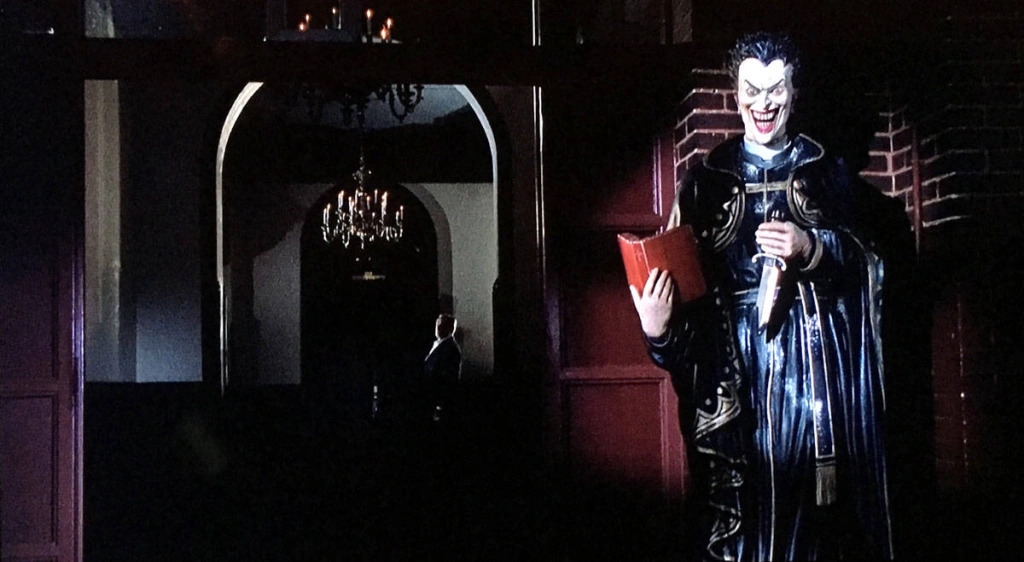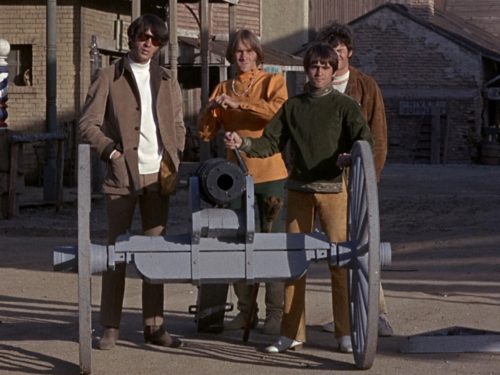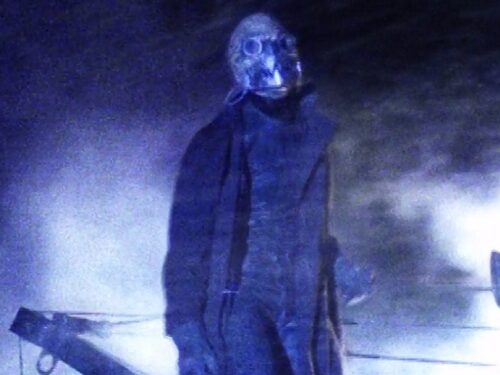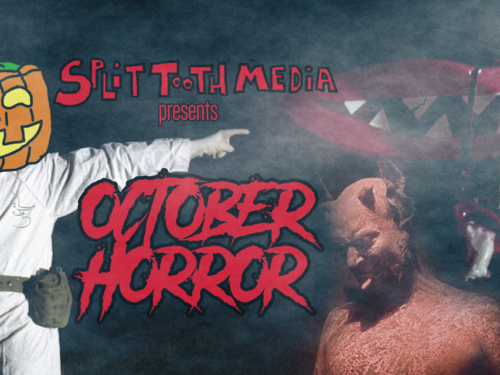A grand culmination of its creator’s life and career, The Exorcist III is an under-appreciated work of interdisciplinary art
I first saw The Exorcist III as a teenager, in 1995 or 1996. My uncle had died in 1996 from complications with HIV/AIDS, and his VHS copy was passed on to me. It felt like a rite of passage. He had a wicked sense of humor, and his film collection reflected this, with The Exorcist III slotted comfortably between Deliverance and Doctor Zhivago. He’d introduced me to both electronic music and cigarettes (I took a puff from a smoldering discard in his ashtray). A gay man who came of age in the 1980s, like many, he was taken much too soon, far too young.
Something about the film transfixed me. Compared to other horror films I was familiar with at that time, The Exorcist III had a patient, understated horror and a sophisticated deadpan humor that I’d never really seen in a genre film before. I’d find myself laughing in one scene and riddled with goosebumps in the next. How had a filmmaker so flawlessly melded such dissimilar tones?
The Exorcist III brings together the many disparate parts of its creator’s life — a culmination into a cinematic accomplishment that, frankly, is an under-appreciated work of interdisciplinary art. A glance at the critical response upon its release 33 years ago is disheartening. There’s a common complaint that the film is dull, talky, lacking in showing, with an overabundance of telling. It’s just too damn literary. They came for vomit and blasphemy, not monologues and Fabio. It didn’t help that the studio, Morgan Creek, insisted upon the cringeworthy title The Exorcist III, which, in light of the disaster of Exorcist II: The Heretic, was a guaranteed curse.
To understand the wonder of this film, we need some background on its auteur, a term here put to use in its fullest expression. William Peter Blatty. Novelist, comedy writer, screenwriter, producer, and director, Blatty wrote the original The Exorcist (1971) novel, adapted it into an Oscar-winning screenplay, and produced 1973’s film adaptation. Seventeen years later he wrote the novel Legion, adapted its screenplay, and this time took the reins as director.
Blatty began life as a child of Lebanese immigrants in New York. Not blessed financially, his family was evicted from almost 30 apartments before he was out of his teens. After his parents divorced, he was raised by his mother, a strict Roman Catholic. Thanks to scholarships, intelligence and ambition, valedictorian Blatty would go on to study literature at Georgetown and earn his masters at George Washington University. After graduation, the budding novelist joined the military, where he found he had a particular knack for writing comedy.
Finding work in Los Angeles, Blatty published his first book, Which Way to Mecca, Jack?, in 1960 and found his way into the Hollywood industry by appearing as a contestant on the Groucho Marx game show You Bet Your Life. He impersonated a Lebanese prince and won $10,000. Thanks to his winnings, Blatty could devote his life to writing novels full time.
Within a few years, Blatty sharpened his comedic craft, writing Hollywood comedies and publishing more novels throughout the 1960s. He wrote an Inspector Clouseau film (A Shot in the Dark, 1964) with Blake Edwards — the first of their many partnerships — a Danny Kaye vehicle (The Man from the Diners’ Club, 1963), an adaptation of one of his novels (John Goldfarb, Please Come Home!, 1965) — itself an adaptation of his screenplay — and a couple Zero Mostel comedies.
Then, in 1971, Blatty published his novel The Exorcist, the first in his “Trilogy of Faith.” The book, a story of a priest, struggling with his faith, who must perform an exorcism on a teenage girl, was a sensation that topped the New York Times Best Sellers List. Blatty adapted the book into 1973’s The Exorcist, which he produced for Warner Bros., hiring the late William Friedkin as director. Blatty won the Academy Award for Best Screenplay, an unprecedented feat for a horror film at that time.
Five years later, Blatty published The Ninth Configuration, a revision of his 1966 novel Twinkle, Twinkle, “Killer” Kane. He adapted the book and made his directorial debut in 1980 with the film version of The Ninth Configuration, his second entry in the Trilogy of Faith.
Blatty released his novel Legion three years later, a sequel to The Exorcist. His book, and the film, completely disregard the events of John Boorman’s 1977 sequel The Exorcist II: The Heretic. In 1990, he would fill the shoes of director for the last time by bringing Legion to the screen. The final installment in his trilogy, The Exorcist III was born.
The film takes place in 1990, 15 years after the events of The Exorcist. Father Dyer (Ed Flanders) and Lieutenant William F. Kinderman (George C. Scott) each mourn their friend, Father Damien Karras (Jason Miller), on the anniversary of his death on those infamous steps on Prospect St. below the MacNeil home. In Blatty’s original book, Kinderman and Karras develop a deeper friendship than portrayed in Friedkin’s film, and, in Friedkin’s director’s cut, Dyer and Kinderman (played by William O’Malley and Lee J. Cobb) become film-going friends after Karras’ death.
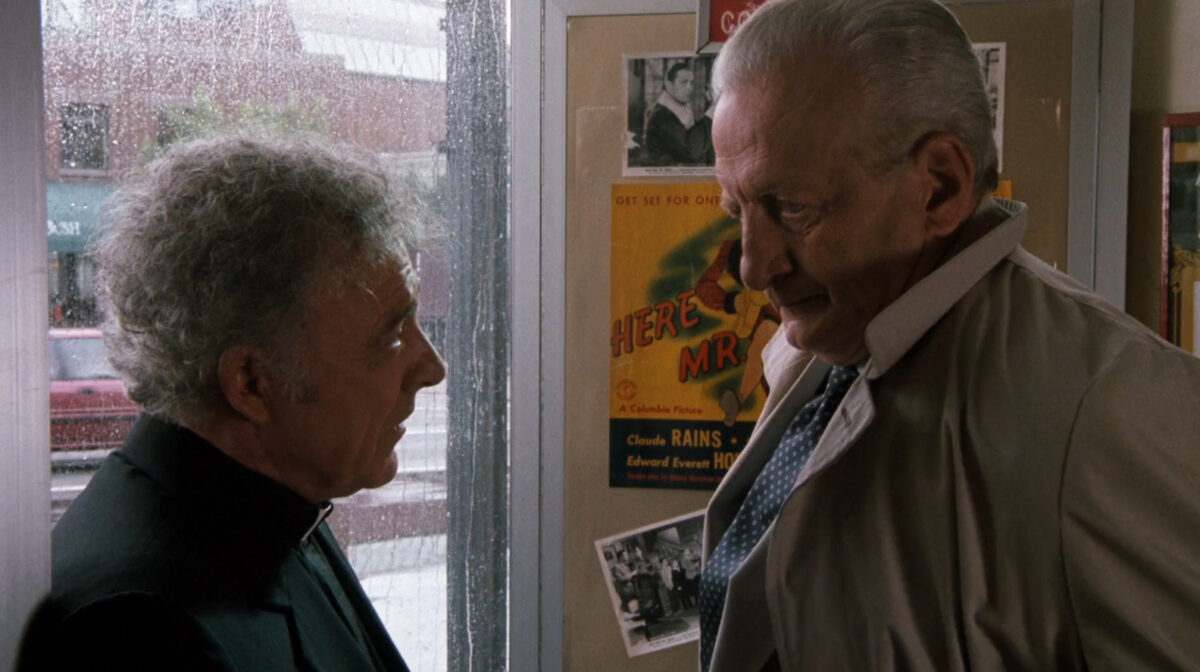
That night, a fog billows down the Prospect steps and drifts across the empty Georgetown streets to a chapel, the Holy Trinity Catholic Church. Its sanctuary lies placid and pristine; statues of the Virgin Mary and Joseph keep vigil. Resting upon a pew, a rose lies atop a forgotten clerical collar. A life-sized wooden crucifix towers over the sacrarium. Jesus’ wooden hands are painted red with the wounds of his crucifixion. A cut back to the clerical collar — a drop of blood stains the white fabric. It wouldn’t be a stretch to conjure the penultimate scene in The Exorcist, of Regan, moved by Father Dyer’s collar, gratefully kissing his cheek. And perhaps this collar foreshadows Dyer’s looming fate.
The fog bursts through the church’s front doors, debris from the street surges into the sanctuary, hymnal pages cascade over the pews and into the aisles. Jesus opens his eyes, his mouth agape, his eyebrows upturned, his wooden face rigid with sorrow. Something evil has crossed the threshold. Jesus’ expression has changed: Now it’s a look of concern; his eyes are fixed directly on us, the viewers. The doors open onto the street, and the film’s title manifests across the screen. Welcome to William Peter Blatty’s The Exorcist III.
We’re thrust into what feels like a dream. From a first-person perspective we walk south from the church down 36th Street through Georgetown University. It is still night, the wet streets reflecting the glow of street lamps. A slow, labored breathing carries us forward. In the shadow of an alcove to the left a teenage boy holds a rose. The camera hardly pans to him as we continue forward. A shadowy figure runs across Prospect Street. They wear a long jacket, or a robe, a priest perhaps? We intersect Prospect, and the boy appears again, clutching the rose. He’s a young Black boy wearing a white Police Boys Club tee shirt. He lifts the rose out to us. In voiceover, we hear a man speak: “I have dreams… of a rose and falling down a long flight of steps.” Is it the voice of Father Damien Karras, the man who threw himself from a window and down these steps 15 years ago?
The next morning, we learn that the boy from the dream is Thomas Kintry. He’s been decapitated and crucified on a pair of rowing oars, his head replaced by that of a statue of Jesus in blackface. Soon after, Father Kanavan (Harry Carey, Jr.), is decapitated in a confessional booth, followed by Father Dyer, who is murdered, drained of blood, and decapitated in his hospital room.
These murders all share the hallmarks of the “Gemini Killer,” Georgetown’s analogue to the Bay Area’s notorious Zodiac Killer (an admitted fan of The Exorcist). But Lieutenant Kinderman runs into a glaring issue: The Gemini Killer, whose real name was James Venamun, was executed 15 years ago.
Kinderman’s investigation leads him to the hospital’s psychiatric ward, where Dr. Temple (Scott Wilson) tells him of an amnesiac man brought in 15 years prior. Initially catatonic, the man has recently succumbed to violent outbursts where he claims to be the Gemini Killer. Brought to his cell, Kinderman is shocked to discover that this man is Father Damien Karras. The same evil that possessed Regan MacNeil — and compelled the Gemini Killer Venamun to embark on a murderous rampage — entered the body of Father Karras at the moment of his death 15 years ago.
For all its death and despair, The Exorcist III is rich with life. Blatty has crafted a world surging with activity. Just look at any scene, peer beyond the featured protagonists, and you’ll see characters with agency — living, breathing human beings with intelligence and deadpan humor. There’s a consistent theme among the characters, an incongruence between demeanor and profession, station and outlook. Priests drink and smoke; they’re weary and sardonic, dripping with nihilism. Doctors chain smoke, and they’re superstitious, drawn to the esoteric. These people are flawed, contradictory, and alive, until they aren’t.
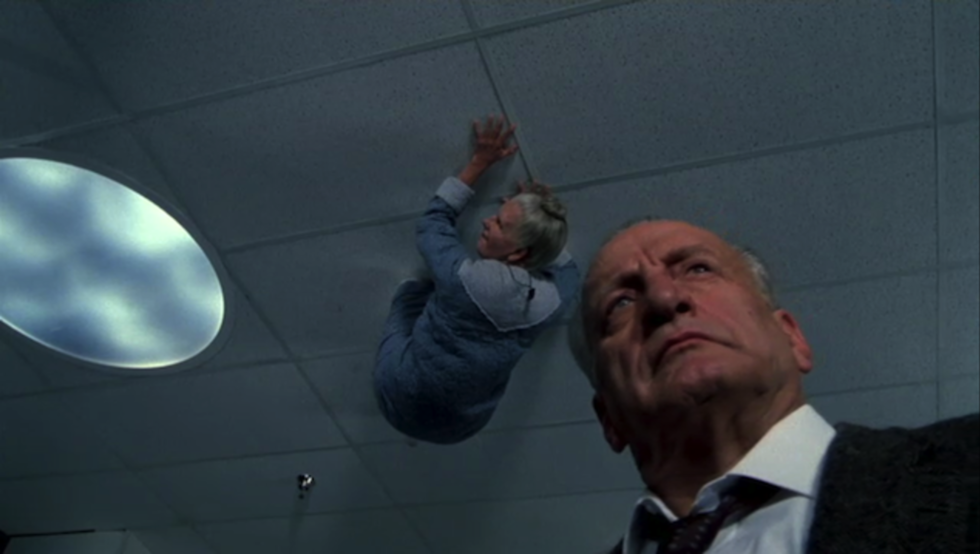
But there’s another side, a dialectic coursing through the film. If the characters are vibrant and alive, the many statues — Joseph, Mary, priests, busts, a Pietà, archangels — are something else; anchored in their lifelessness. All the statues are locked in time, catatonic, not of this world, hardly full of life. In The Exorcist, a statue of the Virgin Mary is defiled. In Exorcist III, Jesus is beheaded. Their essence is passivity, canvases for violence.
This extends to the denizens of the hospital’s psych ward: Men and women, catatonic, locked in a cycle of memories, detached from their surroundings. Like the statues, they are frozen in time, passive to their linearity. And yet, these statues, patients, and even the bodies of the dead, in an act of disparity, find themselves imbued with an alien essence, possessed. Without the structure of an active existence, Blatty, a Roman Catholic, reflexively asserts that his characters’ hallowed essence precedes their worldly existence.
The body of Father Damien Karras, lifeless, buried, comes to life and digs his way out of the earth. The crucifix, a statue of Jesus upon the cross, appears to come alive, his eyes bursting open, his face twisted with horror. The statue of a priest, stoic and sympathetic, contorts into a demented cartoon, violent and evil. Its head becomes that of a cartoon, Batman’s Joker, with wide eyes, jagged brow, and a wide, toothy smile. It still holds a Bible in its right hand, but the crucifix in its left is now a dagger, glistening in the moonlight. The sacred is debased, the head is removed, supplanted by a profane parody. Corpses, the catatonic, and the statues become vessels.
Elderly women forever locked in their minds, lost to the world, and detached from reality are given life. Enlivened by the essence of evil they find themselves possessed with vibrancy. “Catatonics are so easy to possess,” says Venamun (Brad Dourif), the supposed Gemini Killer, the embodiment of Pazuzu, the animating demon, the Master, servant of Satan. As he bewitched Regan in The Exorcist, he does so too with the catatonics. They are nimble and precise as they act out his desires, making a spectacle of their murderous handiwork. And, after they have served their purpose, they find themselves back inside their minds — lost, distant, unmoored from the vibrancy of this world.
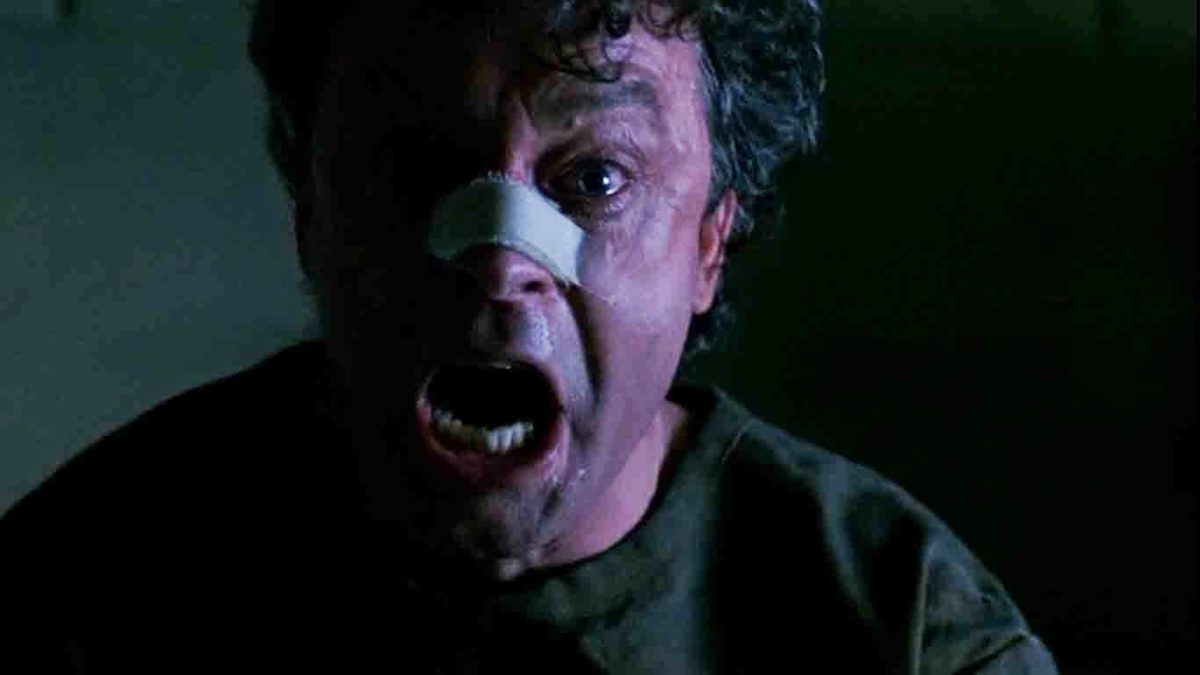
The woman in gray who approaches Kinderman in the psych ward — she asks if he’s her son — is the same woman on the street earlier, shrouded in a black veil, assisted by nurse Allerton. She decapitates Father Kanavan in the confessional. There’s also the quiet comatose woman with the rose, peering out the window. She kills a nurse for her uniform and escapes to Kinderman’s where she attempts to kill his daughter.
Then there’s Mrs. Clelia, the woman with the invisible radio, the radio with “dead people talking.” Is she expecting music from a bygone era, jazz standards like Tommy Dorsey’s “Song of India,” as performed in the heaven of Kinderman’s dream? I’m reminded of Father Dyer at the piano in The Exorcist when, between songs, he says, “My idea of heaven is a solid white nightclub, with me as the headliner, for all eternity, and they love me!” Sweet and gentle, a bit wry, Mrs. Clelia not only murders nurses and priests, she crawls on ceilings, too.
And though the dead, the catatonic, and the statues are overcome by an alien consciousness, Jesus upon the crucifix appears instead to manifest an essence from within, outside the reach of the demon. Carved of wood, he reacts and bleeds. His eyes open, his face responds, all in reaction to that which he cannot control, an evil unwittingly set in motion by Father Merrin in northern Iraq so many years ago. Jesus upon the cross at Holy Trinity reacts to the presence of evil, lifting his wooden eyelids. We further encounter the spirit of Jesus in Father Morning’s dormitory. A bird with a broken wing lay healing in a shoebox on the windowsill. The bird goes silent, dead. A wooden crucifix drops from the wall. A stream of blood trickles down Jesus’ whittled cheek. A dark wind bursts into the room. These are not acts of possession but rather manifestations of a sacred inner presence.
And what is it about the head in The Exorcist III? A boy is decapitated, his head replaced with that of a statue of Jesus. Later, Dyer, another priest, and a nurse suffer the same fate. Karras, reanimated as the Gemini Killer, tells Kinderman that a decapitated head can still see for about 20 seconds. He likes to show the head its body, naturally. He goes on to boast of draining Father Dyer’s body of blood before cleanly decapitating him without spilling a drop. Pazuzu loved playing with heads even in The Exorcist. The possessed Regan evidently twisted Burke’s head backwards before throwing him out of a window. And who can forget her impressive 360-degree head spin? Is it the Godhead? Father, Son, and Holy Spirit defiled, the Trinity desecrated by perverting the mind, twisting and removing that which thinks?
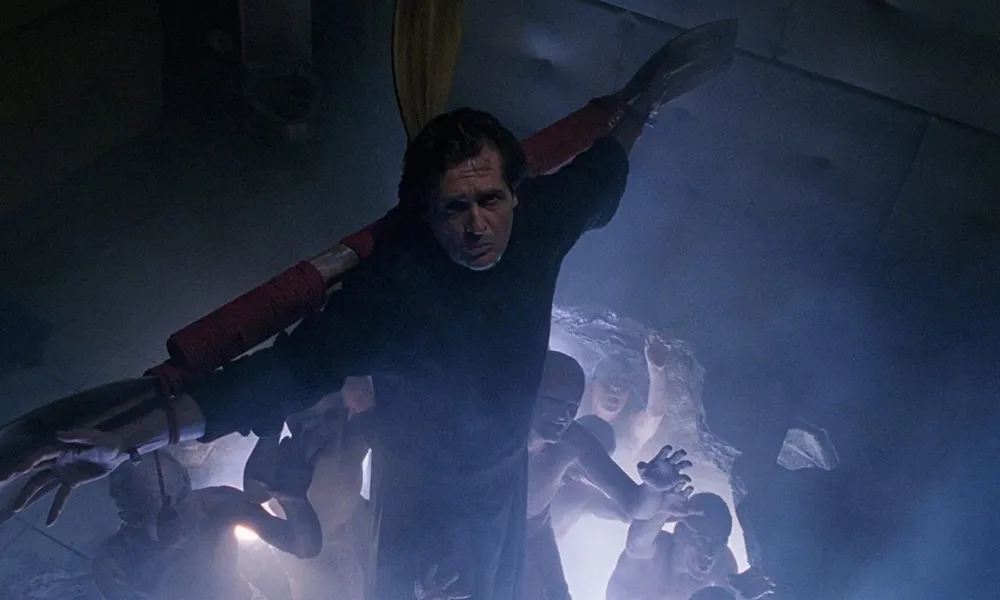
One can easily get lost in the patterns and clues that link the world of both films. Statues, heads, clock pendulums. In The Exorcist, the clock pendulum in Father Merrin’s Iraq office stands still just when the weight of his discovery hits him. Dear God, he’s unleashed a timeless evil upon the Earth! The Exorcist III gives us a similar pendulum pattern. The tick-tocking of the Kinderman home’s clock sets off Bill’s heavenly dream, where two little people carry a large clock with a swinging pendulum. Time hastens, and the pendulum swings faster and faster, conceivably just at the moment Father Dyer is killed. Later, when Kinderman visits Father Riley, a grandfather clock’s pendulum keeps time in the office. At a lull in the conversation, the pendulum stops. Father Riley suggests that a link between the priests’ murders could be Damien Karras’ exorcism. There’s what seems to be a little girl’s laugh and a man whispering, a paper flutters, doors creak open. Kinderman follows the sound, lights flicker, we see the demented priest statue. The essence of evil has entered, and time has no bearing.
Then there are the roses. There’s a red rose at almost every death. The rose atop the priest’s collar, the drop of blood, is this a rose for Damien Karras? Kintry holds a rose in the dream-like opening, just before his murder. The catatonic woman in the psych ward holds a rose close to her chest just before the second nurse is murdered. Or is it a rose for nurse Amy? No rose can be linked to Dr. Temple’s death. His is self-inflicted, a negation of the vagaries of life, an externality, the inevitable consequence of confronting evil.
The Exorcist III gives us the dichotomy of the living and the catatonic — human and statue — the possession of catatonic and statue at odds with the vibrantly alive. This ties into the loss of head, of the mind, destruction of the Godhead: the statue of Jesus beheaded, priests and nurses decapitated. And there are the clocks and roses signaling the presence of evil and death, respectively. The film is rich with religious symbolism, yet it’s never bogged down by the weight of solemnity. For though it is a descent into horror and defilement, it offers some quality laughs along the way.
The intelligent, and often comedic dialogue is the crown jewel of the film. Interestingly, the dialogue appears to be the source of some of the film’s harshest criticisms. There are complaints that characters “describe horrors that might more profitably have been on the screen.” Come on, Blatty, show us the gore! Some say it “has the feel of a nightmare catechism lesson, or a horror movie made by a depressed monk.” The reviews are in: it’s boring and talky. But this may simply be a reaction to defied expectations, being primed for one thing and encountering something else.
Listen to The Cinesthesia Podcast talk about Blatty’s career:
We expect a certain something going into a horror film. And this isn’t that. The Exorcist III withholds. It’s not going to give you what you want. Instead of showing you beheadings, it’s going to describe them. The most disturbing moments are recounted, or they occur just after the cut. Jump scares? Well, yes, there are a few, but they’re cheap, intentionally so. The confessional door sliding open, the woman running into Kinderman at Healy Hall, nurse Amy waking a patient — they all give us a jolt.
But then, there’s the scene. Four minutes and 20 seconds long, nearly one take in wide shot, with only a few cuts for detail, it is one of the greatest scenes in all of cinematic history. Nurse Amy works the hospital night desk as two police officers come and go. Amy hears a sound in a patient’s room, and she investigates. It’s just the clink of melting ice in a glass of water. A sleeping patient springs to life. Amy screams. We have our cheap jump scare. But Amy goes back to the desk. We remain in wide shot. For a while. The sound of creaking comes from one of the rooms. Amy gathers her keys and goes to investigate. One of the police officers grabs the other, and they disappear into another room. The officer returns, grabs his hat and disappears down the hallway. We remain in wide shot. Amy checks the room, all clear. She flips off the light, closes the door, locks it, and walks back to the desk. Still in wide shot. Before Amy can make it a few steps, the camera whip zooms to a nun-like figure in white robes. With calm precision, the figure descends on Amy with shears outstretched. The soundtrack squeals like a demented chorus or mizmār, or bagpipes straight from hell. The scene cuts just before the shears reach Amy’s neck, and we zoom out from a decapitated statue of Jesus. The violence is implied. The wait is excruciating, confusing, and palpable. For over four minutes almost nothing happens. Blatty withholds. And then he delivers, cutting away just before the act of violence.
We’re told in the next scene what happened to poor nurse Amy: “She was slit down the middle, cut open, and all her vital organs removed. Then the killer stuffed her body with, uh… other materials, and sewed her back up.” Kinderman is confused. “Other materials?” he asks the detective. “Rosaries. Catholic rosaries.” As much as critics would have relished seeing our killer cut open a body and stuff it with rosaries, the effect holds more weight in dialogue, Kinderman’s jaded disbelief, the lieutenant’s words caught in his throat. Much of the film functions in the realm of description, inquiry, curiosity, emotional disbelief, wearied sarcasm. The characters feel real because they are looking for us. We feel the violence on the detectives’ faces because they’ve ventured into hell and come back again. Kinderman struggles to believe in a universal essence in a world that has no regard for the sanctity of life, a world that allows cold desecration of the innocent and weak.
Stream The Exorcist III on Amazon Prime
Purchase The Exorcist III on Blu-ray or 4K UHD
Find the complete October Horror 2023 series here:
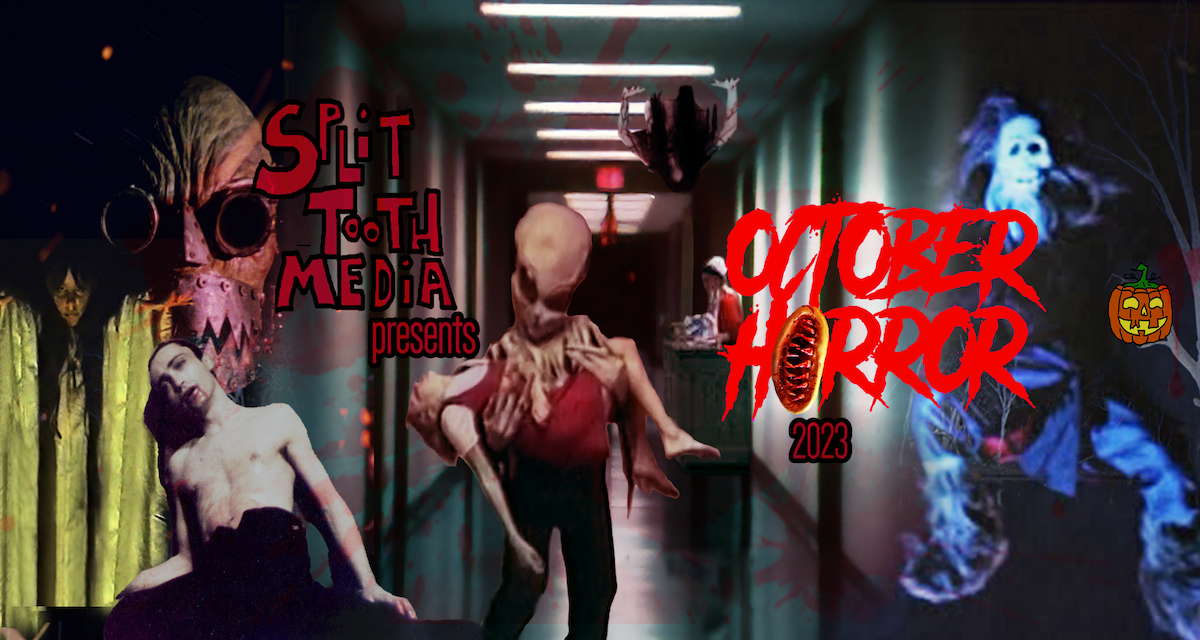
Stay up to date with all things Split Tooth Media and follow Michael on Twitter
(Split Tooth may earn a commission from purchases made through affiliate links on our site.)

